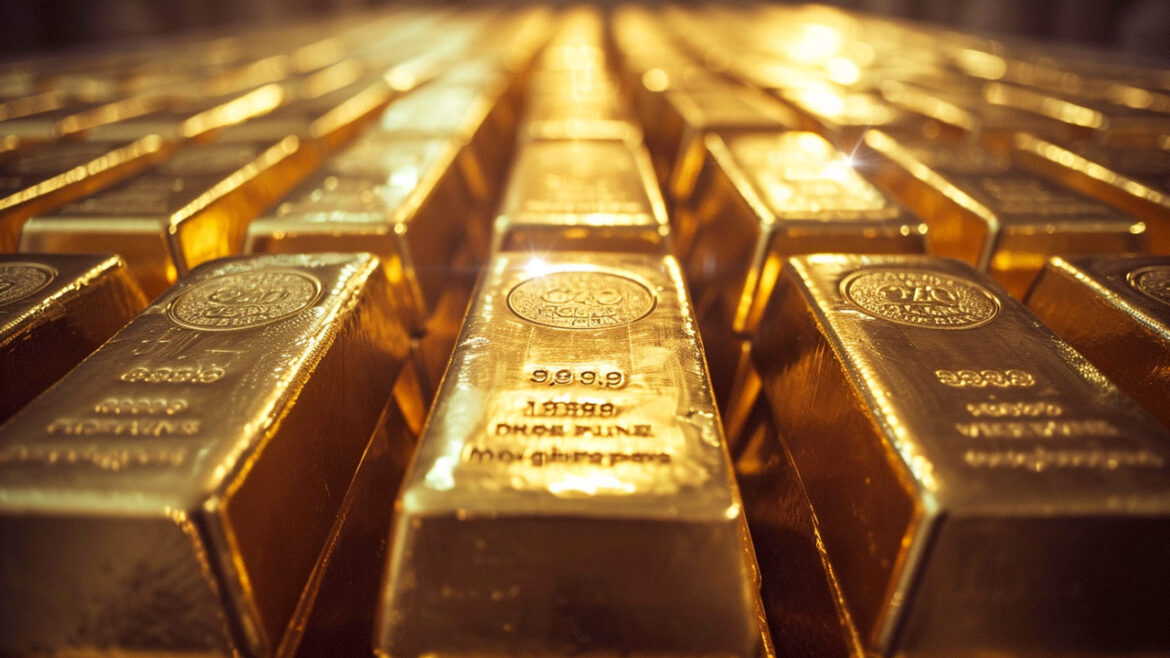Gold has all the potential to go unprecedentedly high. But silver will be gold on
Site:
Precious metals news
 GOLD MARKET UPDATE: Strong Central Bank Diversification Into Gold As ETF Demand Continues To Weaken
GOLD MARKET UPDATE: Strong Central Bank Diversification Into Gold As ETF Demand Continues To WeakenJanuary 31, 2024
Central bank gold demand continued to be strong in the fourth quarter, pushing the total to over 1,000 metric tons for the year. Compare this to the Gold ETF net outflows of 244 metric tons over the same period...
JPMorgan Chase CEO Jamie Dimon has raised an alarm over the burgeoning U.S. national debt, warning of a potential global market rebellion. As of now, the U.S. national debt stands at a staggering $34.14 trillion, roughly amounting to $100,000 per person in the country. Despite the debt ceiling being suspended until 2025, Dimon expressed grave concerns about the long-term economic implications during a panel discussion at the Bipartisan Policy Center.
In an unexpected turn, the Euro Zone managed to avert a recession in the latter half of 2023, thanks to stronger economic performance in Italy and Spain. This development counterbalanced Germany's economic difficulties, allowing the Euro Zone to narrowly escape a downturn. The Gross Domestic Product (GDP) remained flat in the last quarter of 2023, narrowly avoiding a recession following a slight decline in the previous quarter. Despite these positive signs, the Euro Zone still faces significant challenges, including high-interest rates, weak foreign demand, and ongoing geopolitical tensions. Economists had initially expected a further decline, indicating the region's persistent struggles in a complex economic landscape.
Samsung's 2024 commodity market outlook suggests a cautiously optimistic view for key commodities. The previous year, 2023, did not meet profitability expectations in the commodity sector, primarily due to more resilient supply chains than anticipated. However, for 2024, the fundamentals for most commodities appear neutral to mildly bullish. Despite concerns over slow economic growth impacting demand, the market could benefit from potentially lower interest rates. Samsung C&T Trading & Investment Group, known for its involvement in various commodities, anticipates diverse performance across its portfolio in the coming year.
The global demand for silver is on an impressive trajectory, with forecasts indicating it could reach a staggering 1.2 billion ounces in 2024. If achieved, this figure would mark the second-highest level of silver demand ever recorded. The surge is primarily driven by an increased industrial offtake, with expectations that this sector will reach new annual highs. However, the short-term outlook suggests some potential challenges. The diminishing likelihood of early U.S. interest rate cuts may exert pressure on investments across the precious metals spectrum, including silver.
Pandora, the world's largest jeweler by product volume, has made a significant shift in its production practices by moving away from mined precious metals. Instead, the company is exclusively using recycled gold and silver. This transition by the Danish company, famed for its charm bracelets priced between $65 and $95, is a sustainability-driven decision. Annually, Pandora consumes about 340 tonnes of silver and one tonne of gold. In 2022, the company's supply chain was responsible for 264,224 tonnes of CO2 emissions, as per its annual report. The switch to recycled metals is expected to reduce Pandora's indirect CO2 emissions by approximately 58,000 tonnes each year, according to Mads Twomey-Madsen, the senior vice president of communications and sustainability at Pandora.
West Texas Intermediate crude experienced a 1.5% rise in a particularly volatile trading session, primarily driven by a surge in algorithmic buying. According to Dan Ghali, a commodity strategist at TD Securities, while this aggressive algorithmic activity has propped up futures, sustaining these higher prices will require more fundamental market drivers. The recent drone attack on U.S. soldiers has escalated tensions in the Middle East, yet, so far, it has had a limited effect on oil supplies. The industry is closely watching the U.S. military's potential response, as noted by Daniel Hynes, a senior commodity strategist at ANZ Group Holdings Ltd., with expectations that it could further influence the market. Adding to the complexity, futures had initially fallen due to concerns over long-term demand, highlighted by Saudi Aramco's decision to abandon plans to increase its crude output capacity, signaling uncertainties about future oil consumption.
 IMF's Brighter Global Outlook: U.S. Strength and China's Stimulus Lead the Charge
IMF's Brighter Global Outlook: U.S. Strength and China's Stimulus Lead the ChargeJan 30, 2024 - 09:46:27 PST
The International Monetary Fund (IMF) has revised its global growth forecast for 2024 upwards, now predicting a 3.1% expansion, marking a 0.2 percentage point increase from previous estimates. This optimistic adjustment stems from the resilience demonstrated by the U.S. economy, alongside the effects of fiscal stimulus in China. Additionally, robust performances from major emerging market economies have contributed to this improved global economic outlook. Despite these positive developments, the report does caution about new risks, particularly to commodities and supply chains, arising from escalating volatility in the Middle East. However, a notable silver lining is the quicker-than-anticipated decline in global inflation rates, suggesting a more stable economic environment moving forward.
As the Federal Reserve gears up for its meeting on January 31, 2024, there's a significant shift in expectations due to the improving economic landscape. Inflation rates are nearing the Fed's target, and the economy exhibits robust growth with strong consumer spending and historically low unemployment rates. This positive trend defies earlier recession forecasts, sparking debates on the durability of this economic strength. Federal Reserve officials, grappling with post-pandemic economic assessments, are cautiously contemplating rate cuts. The first cut might occur around May or June, with the exact timing being a primary discussion point at the upcoming meeting.
Valentine's Day is here and you might find yourself buying (or wishing you had remembered to buy) a Valentine’s Day present. A classic romantic present involves gold, diamonds, and sometimes both. And both diamonds and gold seem at first blush to have a lot in common.
China’s 10-Year Yield hit a two-decade low, influenced by the People’s Bank of China's unexpected reduction in the reserve-requirement ratio. This move is expected to release significant liquidity into the market and indicates a potential pivot in China's monetary policy, contrasting with previous conservative stances.
The U.S. Treasury is expected to announce an increase in long-term debt sales. This comes after a surprising reduction in its quarterly borrowing estimate. The Treasury's move signals its preparation for cash management needs and the enhancement of liquidity in off-the-run Treasuries. This move may affect the Treasury market and investor strategies.
Uncover the mystery the Federal Reserve doesn’t want you to know.
Prices for gold and silver hit their highest levels in over two weeks. Gold for April delivery on the Comex division of the New York Mercantile Exchange settled at $2,044.60 an ounce, the highest since January 12. Silver for March delivery also rose, ending the day at $23.251 an ounce, marking a similar two-week high.
Investors are increasingly betting on long-duration U.S. Treasuries, anticipating lower yields as the Federal Reserve leans towards rate cuts. The general sentiment suggests that longer-duration bonds, more sensitive to interest rate changes, could be a wise investment in anticipation of a slowing economy and possible rate cuts.
Global stock markets show mixed responses with Asia-Pacific stocks mostly up, despite Middle East tensions and Chinese property concerns. U.S. futures remain stable with key economic data releases and Fed decisions looming. Oil prices remain steady, while gold sees a slight increase.
A recent report from Oxfam, highlighted on the Undergraduate Laws Blog, unveils a startling increase in wealth inequality. Since 2020, the wealth of the world's five richest men has more than doubled from $405 billion to $869 billion, while the poorest 60% of the global population, nearly 5 billion people, have seen their wealth decline. This sharp rise in billionaire wealth, set against the backdrop of a global pandemic that restricted individual freedoms, underscores deepening economic disparities.
Recent data have many cheerful about the economy. But according to Peter in his latest podcast, the economy may already be in recession. Here are some of Peter’s biggest causes for concern:
Citizens of Georgia, Kentucky, Wisconsin, and Kansas may soon enjoy lower taxes on precious metals if recently introduced pro-metal bills are made law in 2024.
In 2023, the Treasury added $2.6T to the national debt. While that number alone should be enough to scare anyone, the details reveal something even more concerning. $2T of it, or 77%, was financed entirely with short-term Treasury Bills maturing in less than a year. The chart below shows the debt issuance trend over the last 20 years. As shown, the Treasury typically relies on medium-term debt (2-10 Year Notes) to fund the budget deficit. 2023 was a massive change in standard procedure as shown by the giant light blue bar on the right of the chart.










